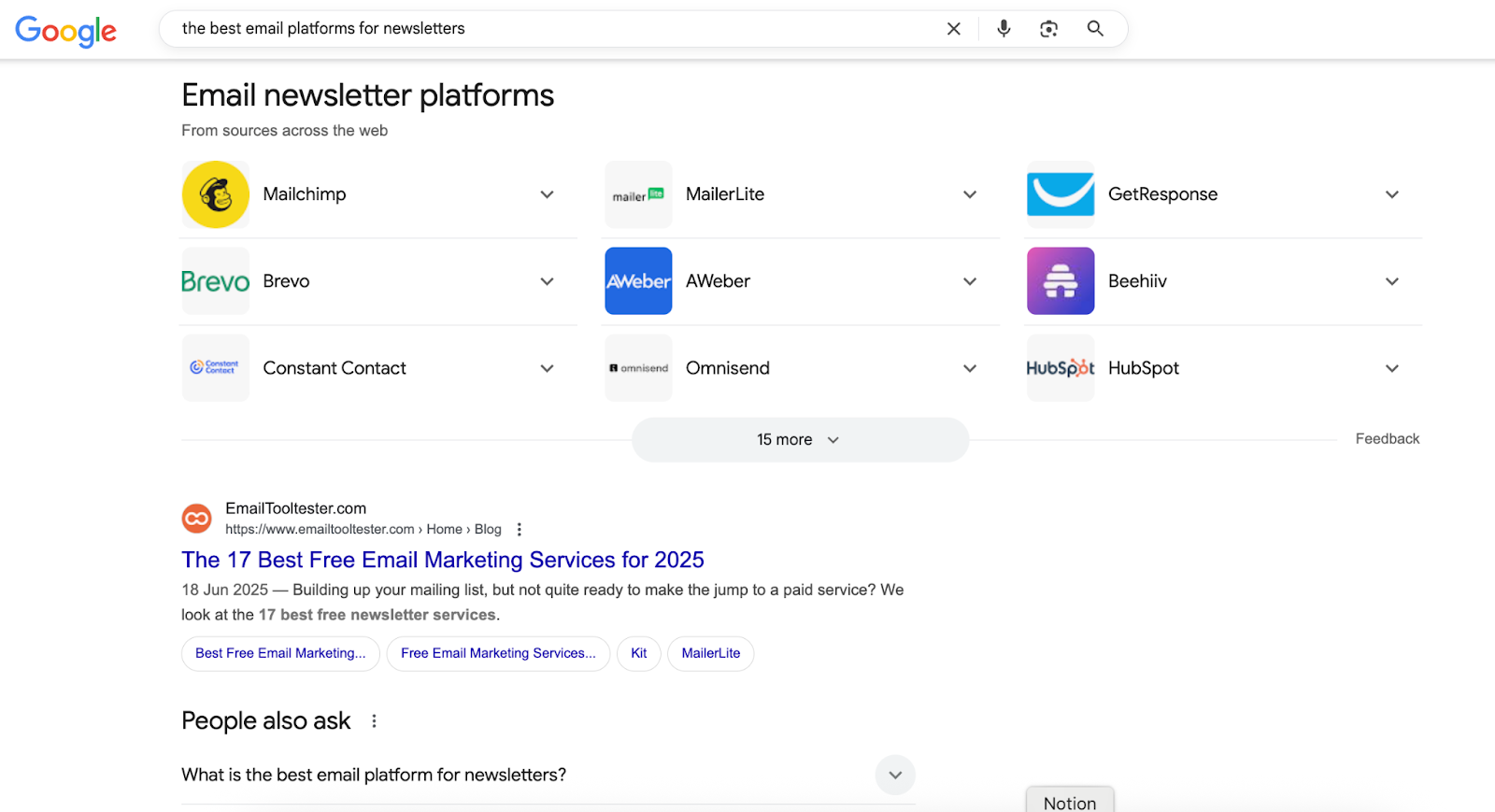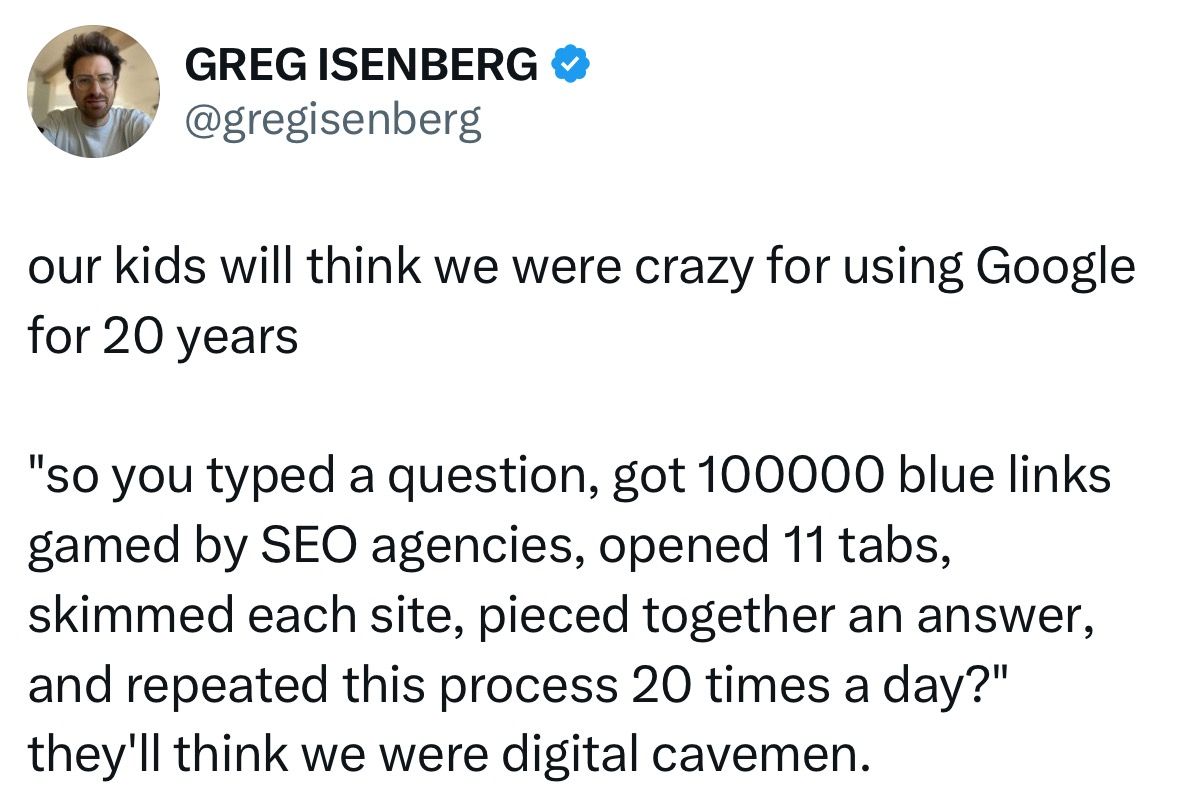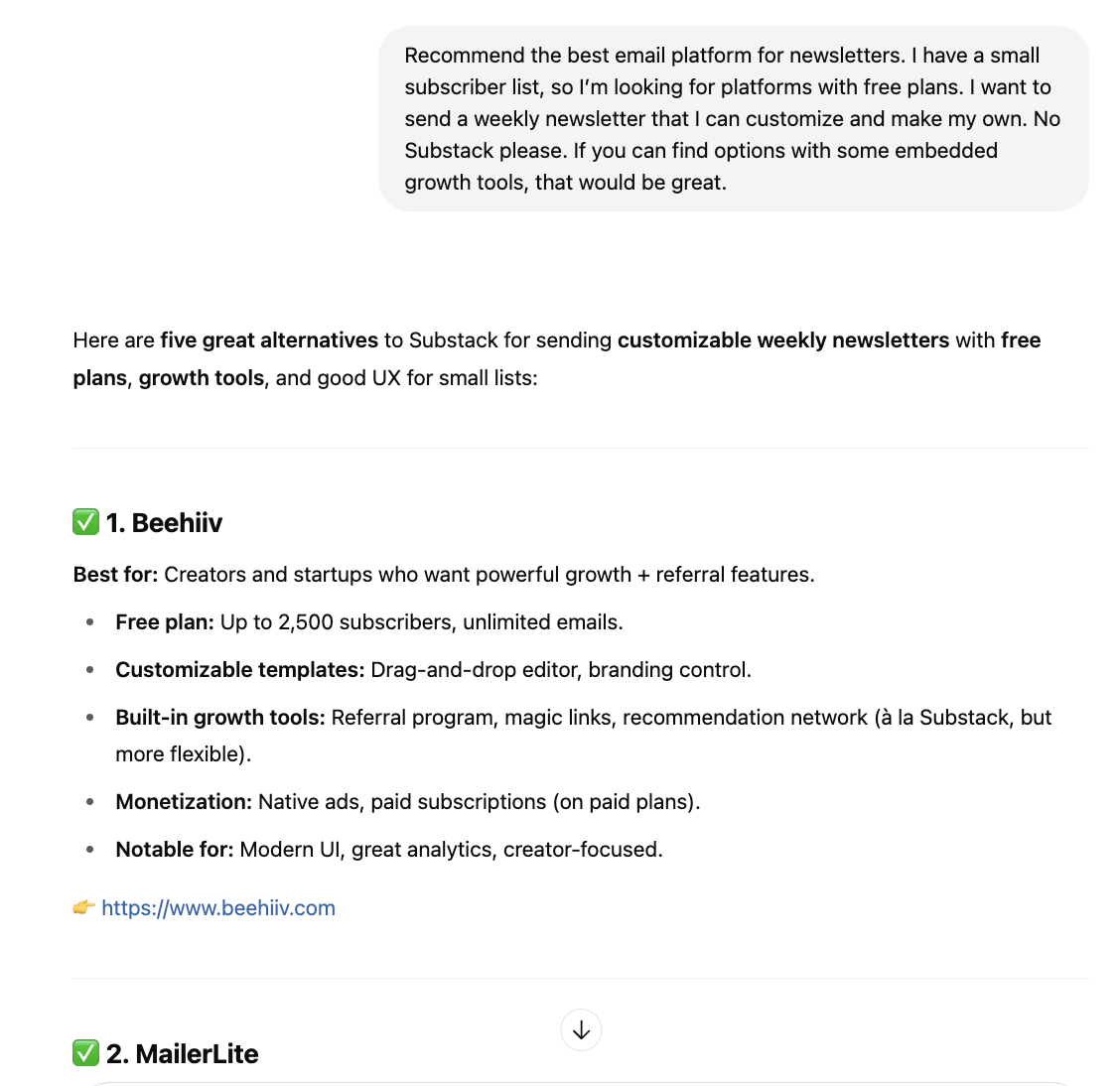From Reads to Leads is a newsletter for writers who want more. It's about marketing. Strategy. Positioning. Operations. Results. And yes, it talks about writing too. But through a marketing lens. If this was sent to you, subscribe here so you don't miss the next email.
In today's newsletter:
Everyone’s talking about GEO (Generative Engine Optimization).
Lots of people have been sharing playbooks. Some of these playbooks are not anything new.
Take this gem from one of our clients’ SEO teams:
“Write simply, without ‘clever’ intros.
1️⃣ LLMs understand clear, direct sentences better.
2️⃣ Skip metaphors, jokes, or ‘creative’ openings — get straight to the point.”
🔍 Example:
❌ “We live in an age of technological revolution, where content is king…”
✅ “LLM systems extract only the fragments that clearly answer the user’s query.”
Duh. That’s a basic writing tip.
For years, many SEO teams have been stuck in the keyword-stuffing era. They optimize for machines instead of people.
Now that AI tools are here, it’s finally forcing SEOs to think about what useful content really means.
And that’s where things get interesting.
While most GEO advice sounds like a remix of “write good content,” there’s one signal AI keeps sending ↓
Be specific.
When you search on Google, you type in a short query. For example: best email platform for newsletters

Then you scroll through a list of results, skim a few blog posts, maybe open some review sites.
You need to analyse this information, decide what fits, and maybe then start a trial. Or two.

Crazy, right?
Instead, in ChatGPT, you’re having a conversation. You're not searching for things. Here’s how:
Recommend the best email platform for newsletters. I have a small subscriber list, so I’m looking for platforms with free plans. I want to send a weekly newsletter that I can customize and make my own. No Substack please. If you can find options with some embedded growth tools, that would be great.
ChatGPT answered with a shortlist of options tailored to exactly that context:

In short, SEO is about keywords. GEO is about context.
Context is specific. Keywords are not.
Before the internet was even invented people asked friends, neighbors, coworkers who knew the “context” to recommend things. This is exactly how search with AI works now.
I've been building BOFU-first content strategies for years. Now it’s everyone’s favorite. Especially in the LLMO/GEO camp.
The logic is simple – target people who are ready to buy, and you will get results faster.
Before AI, that meant optimizing pages for transactional keywords like “content marketing agency” or “email marketing platform.”
But with AI, just keywords aren’t enough. Your job is to supply content that is specific enough to match the context of the ask.
So how do you win?
Create content that clearly says:
👉This is who we’re for.
👉This is why we’re better.
👉Here’s the proof”
And here's where it gets complicated.
To be that specific, you have to know your audience. You have to understand your product.
You can’t fake it with generic SEO copy you received from a content writer who put together 5 pages of your competitors and reworded their content to fit your brand.
You can't be broad.
You need to be… → specific
If you can’t define your positioning, how can you expect AI tools to recognize it?
They don’t guess. They synthesize what you’ve already said about yourself. And what others have said about you — across your site, reviews, and third-party mentions.
Without a sharp positioning strategy, your brand won’t show up in context-rich AI queries because there’s no clear context to connect to.
At Zmist & Copy, visibility in LLMs is now a dedicated OKR in our content strategies.
To achieve this OKR, we typically include the following types of content:
The best in the X category blogs
Pages like “best fleet management software” that target category-level searches with specific messaging around product strengths.
Comparison & alternatives
Content that explains how your product is different from competitors.
See It Solved
Content about problems that positions the product as the solution and shows how customers use the product to overcome specific challenges.
Want to learn more about See It Solved and other models we coined?
Wait for my next newsletter!
I’m on a workation for 2 weeks, living my best life by the sea (follow me on Instagram to see sunny mornings, salty hair, and behind-the-scenes of trying to balance client calls with beach walks).
How are you doing this summer?
Kate
P.S. If we aren't connected already, follow me on LinkedIn and Instagram. If you like this newsletter, please refer your friends.
P.P.S. Need a hand with content? Fix your mediocrity problem with Zmist & Copy

When features beat benefits and how to nail your message.

In content marketing, the last thing you want to do is waste your time producing content that doesn't bring any results. In this blog post, I'll show you how to apply McKinsey's problem-solving technique to explore the problems in your content strategy so that you can stop wasting time on stuff that doesn't work.
Subscribe to From Reads to Leads for real-life stories, marketing wisdom, and career advice delivered to your inbox every Friday.